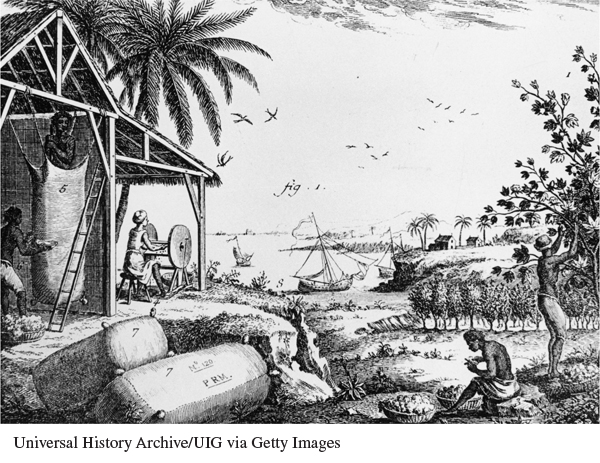Enlightenment Debates About Race
As scientists developed taxonomies of plant and animal species in response to discoveries in the Americas, they also began to classify humans into hierarchically ordered “races” and to speculate on the origins of such races. In The System of Nature (1735), Swedish botanist Carl von Linné argued that nature was organized into a God-
Enlightenment thinkers such as David Hume and Immanuel Kant helped popularize these ideas. In Of Natural Characters (1748), Hume wrote:
I am apt to suspect the negroes and in general all other species of men (for there are four or five different kinds) to be naturally inferior to the whites. There never was a civilized nation of any other complexion than white, nor even any individual eminent amongst them, no arts, no sciences. . . .
Kant taught and wrote as much about “anthropology” and “geography” as he did about standard philosophical themes such as logic, metaphysics, and moral philosophy. He elaborated his views about race in On the Different Races of Man (1775), claiming that there were four human races, each of which had derived from an original race. According to Kant, the closest descendants of the original race were the white inhabitants of northern Germany. (Scientists now know the human race originated in Africa.)
Using the word race to designate biologically distinct groups of humans, akin to distinct animal species, was new. Previously, Europeans had grouped other peoples into “nations” based on their historical, political, and cultural affiliations, rather than on supposedly innate physical differences. Unsurprisingly, when European thinkers drew up a hierarchical classification of human species, their own “race” was placed at the top. Europeans had long believed they were culturally superior to “barbaric” peoples in Africa and, since 1492, the New World. Now emerging ideas about racial difference taught them they were biologically superior as well. In turn, scientific racism helped legitimate and justify the tremendous growth of slavery that occurred during the eighteenth century. If one “race” of humans was fundamentally different and inferior, its members could be seen as particularly fit for enslavement and liable to benefit from tutelage by the superior race.
Racist ideas did not go unchallenged. The abbé Raynal’s History of the Two Indies (1770) fiercely attacked slavery and the abuses of European colonization. Encyclopedia editor Denis Diderot adopted Montesquieu’s technique of criticizing European attitudes through the voice of outsiders in his dialogue between Tahitian villagers and their European visitors. (See “Evaluating the Evidence 16.3: Denis Diderot, ‘Supplement to Bougainville’s Voyage.’”) Scottish philosopher James Beattie (1735–1803) responded directly to claims of white superiority by pointing out that Europeans had started out as savage as nonwhites supposedly were and that many non-
526
